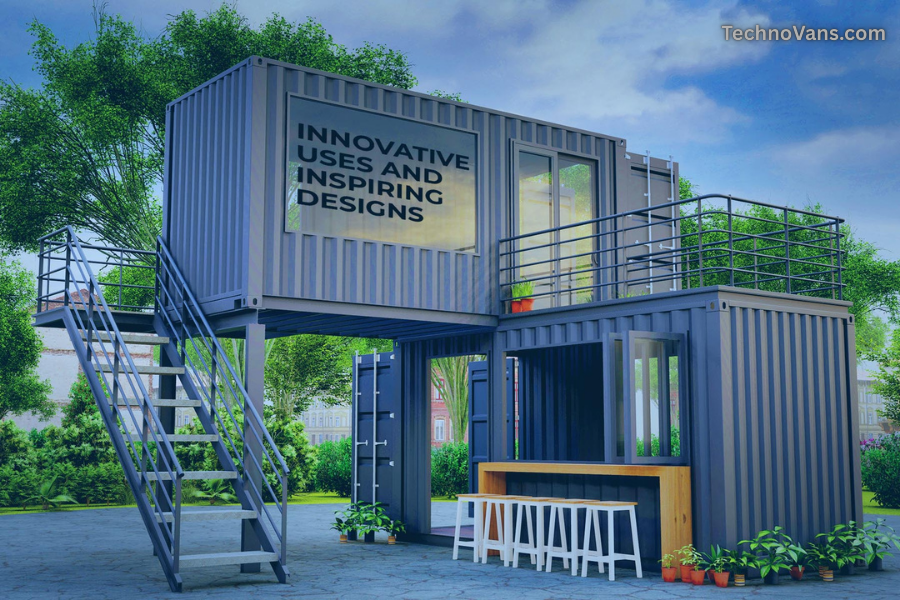Innovative Uses of Shipping Containers in Modern Construction
Key Takeaways:
- Shipping containers offer a versatile, eco-friendly solution for sustainable construction.
- Their structural integrity provides increased safety and durability.
- Cost-effectiveness makes them an attractive option for budget-conscious projects.

Table of Contents:
- Introduction to Shipping Container Construction
- Advantages of Using Shipping Containers
- Environmental Benefits of Shipping Containers
- Creative Residential Applications
- Commercial Uses and Success Stories
- Safety and Structural Integrity
- Challenges and Considerations
- Future Trends in Container Architecture
Introduction to Shipping Container Construction
Shipping container construction has surged in popularity, offering an innovative way to utilize surplus containers for building structures. The trend captures the imagination of architects and builders who seek to combine modern aesthetics with sustainable practices. With companies specializing in custom containers, transitioning from industrial to residential or commercial spaces is easier than ever.
Historically, the movement toward using shipping containers for construction began as a practical solution to reduce environmental waste and construction costs. As global sustainability awareness grows, containers have become an appealing alternative to conventional building materials. The rectilinear form of the containers adds a contemporary edge to architectural design, often blending harmoniously with other sustainable practices such as solar power and green roofing. Their increased use reflects a shift in architectural priorities emphasizing adaptability and eco-friendliness.
Advantages of Using Shipping Containers
One of the most compelling benefits of shipping containers is their inherent cost-effectiveness. Unlike traditional construction, which can be time-consuming and expensive, containers come prefabricated and structurally sound, significantly reducing the time and resources needed for construction. This efficiency allows developers to offer sturdy, stylish structures at a fraction of the cost.
Beyond cost, the modular and standardized design of shipping containers facilitates an extraordinary degree of flexibility in design. Creators can stack, align, and combine these units to develop unique structural configurations that cater to various functional needs and aesthetic preferences. The use of custom containers further enhances this adaptability, allowing for tailored modifications in size, layout, and finish to better suit specific project requirements. This adaptability extends to diverse environments, from bustling urban centers needing quick installations to remote areas where traditional building materials are scarce or costly.
Environmental Benefits of Shipping Containers
Utilizing shipping containers is a sustainable choice that aligns with modern eco-friendly construction practices. This approach helps reduce the carbon footprint by repurposing materials that might otherwise be wasted. Reducing traditional construction waste, a significant contributor to landfill overflow exemplifies how the industry can pivot towards more sustainable practices.
Additionally, transforming containers into habitable spaces supports a circular economy by promoting the reuse of existing resources rather than exploiting new ones. Extending a container’s lifecycle through such creative applications contributes positively to reducing the environmental footprint associated with construction activities. This makes container architecture not just a low-cost option but also a conscientious choice for environmentally aware developers.
Creative Residential Applications
Using shipping containers in residential projects has resulted in some genuinely innovative living spaces, redefining how residential architecture can address modern housing challenges. Tiny homes and modular housing solutions reflect this trend by presenting affordable and customizable living arrangements that meet the demands of an urban population.
Homeowners and designers across the globe have embraced container homes, crafting living spaces that blend contemporary design with practical functionality. In dense city environments, where space is premium, shipping containers can be stacked and configured to fit into smaller plots, offering a compact yet comfortable living solution. Using these containers has also captured the imagination of rural homeowners looking to fabricate modern retreats that harmonize with natural surroundings. Emphasizing sustainability and creativity, shipping container homes vividly illustrate how blending modern aesthetics with sustainable standards can yield remarkable results.
Commercial Uses and Success Stories
In the commercial world, shipping containers have paved the way for captivating ventures in creating vibrant spaces like pop-up shops, cafes, and offices. These temporary and mobile options allow businesses to adapt to changing market demands without making permanent commitments to a physical location.
Remarkable success stories have emerged from regions worldwide, with examples like those in London’s Boxpark and downtown Detroit’s The Belt demonstrating containers’ potential to transform spaces. These examples underscore how businesses can leverage the visual and functional appeal of containers to attract customers and deliver unique experiences. With their distinctive industrial aesthetic and ease of modification, shipping containers can be repurposed to reflect brand identity while meeting functional requirements efficiently.
Safety and Structural Integrity
Shipping containers boast exceptional durability, originally designed to withstand harsh marine environments. This resilience is an inherent advantage, providing structural integrity that translates well into reliable construction materials. Built from durable steel, containers offer heightened protection against natural disasters like earthquakes and hurricanes, making them a prudent choice for building in disaster-prone areas.
Proper modifications are crucial to optimize the safety standards of container structures. Ensuring adequate insulation and ventilation is essential, especially given the steel’s thermal conductivity, which can affect indoor thermal comfort. Likewise, addressing potential condensation issues ensures a long-lasting, habitable environment. When reinforced and adapted correctly, the robust steel framework lends itself to creating secure and safe living or commercial spaces.
Challenges and Considerations
Despite their myriad benefits, shipping containers do present some challenges. Essential considerations like insulation, a primary concern due to the heat-conducting nature of steel, must be addressed to enhance thermal comfort and energy efficiency. Seasonal temperature variations can impact interior conditions, necessitating robust climate control systems integration.
Builders are also tasked with navigating local building codes and regulations, which can significantly differ by region. These regulations can impact design choices, thus requiring comprehensive planning to meet legal requirements. Other practical concerns include managing potential issues with rust, necessitating treatments such as paint coatings or water-proofing membranes. Balancing these considerations with design ambitions remains fundamental to successful container construction.
Future Trends in Container Architecture
The architecture of shipping containers continues to evolve, signaling a promising future for this avant-garde construction method. Emerging trends indicate a rising interest in combining container structures with smart technology and renewable energy sources, ushering in an era of sophisticated, sustainable living spaces.
Innovations such as prefabricated components and advancements in sustainable materials are setting the pace for container architecture. According to architectural trends, container buildings could integrate seamlessly with smart home technologies, optimizing energy use and enhancing convenience. As modular and adaptive architecture grows, shipping containers will likely remain compelling, showcasing their utility as functional spaces and statement pieces within diverse contexts.



